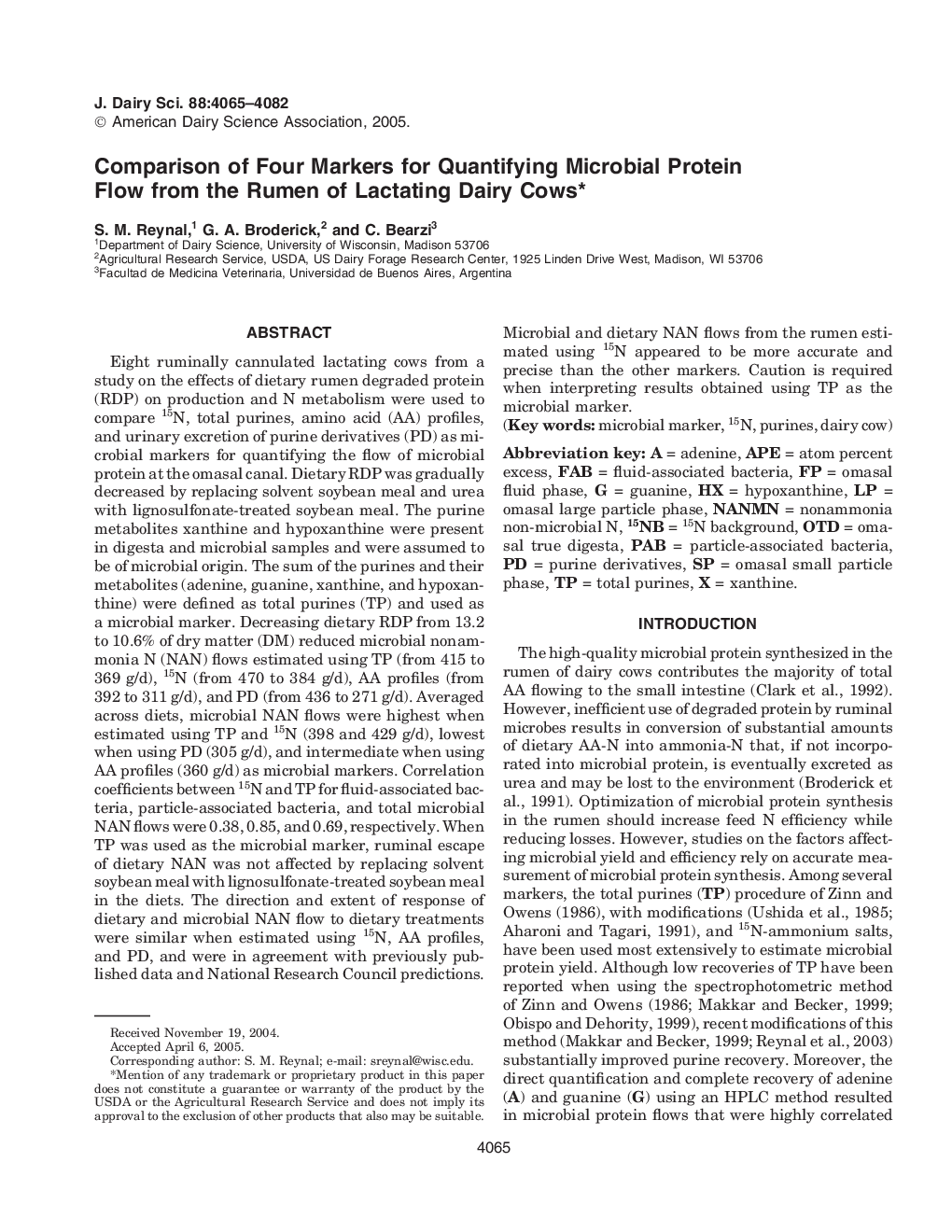| Article ID | Journal | Published Year | Pages | File Type |
|---|---|---|---|---|
| 2441907 | Journal of Dairy Science | 2005 | 18 Pages |
Eight ruminally cannulated lactating cows from a study on the effects of dietary rumen degraded protein (RDP) on production and N metabolism were used to compare 15N, total purines, amino acid (AA) profiles, and urinary excretion of purine derivatives (PD) as microbial markers for quantifying the flow of microbial protein at the omasal canal. Dietary RDP was gradually decreased by replacing solvent soybean meal and urea with lignosulfonate-treated soybean meal. The purine metabolites xanthine and hypoxanthine were present in digesta and microbial samples and were assumed to be of microbial origin. The sum of the purines and their metabolites (adenine, guanine, xanthine, and hypoxanthine) were defined as total purines (TP) and used as a microbial marker. Decreasing dietary RDP from 13.2 to 10.6% of dry matter (DM) reduced microbial nonammonia N (NAN) flows estimated using TP (from 415 to 369 g/d), 15N (from 470 to 384 g/d), AA profiles (from 392 to 311 g/d), and PD (from 436 to 271 g/d). Averaged across diets, microbial NAN flows were highest when estimated using TP and 15N (398 and 429 g/d), lowest when using PD (305 g/d), and intermediate when using AA profiles (360 g/d) as microbial markers. Correlation coefficients between 15N and TP for fluid-associated bacteria, particle-associated bacteria, and total microbial NAN flows were 0.38, 0.85, and 0.69, respectively. When TP was used as the microbial marker, ruminal escape of dietary NAN was not affected by replacing solvent soybean meal with lignosulfonate-treated soybean meal in the diets. The direction and extent of response of dietary and microbial NAN flow to dietary treatments were similar when estimated using 15N, AA profiles, and PD, and were in agreement with previously published data and National Research Council predictions. Microbial and dietary NAN flows from the rumen estimated using 15N appeared to be more accurate and precise than the other markers. Caution is required when interpreting results obtained using TP as the microbial marker.
